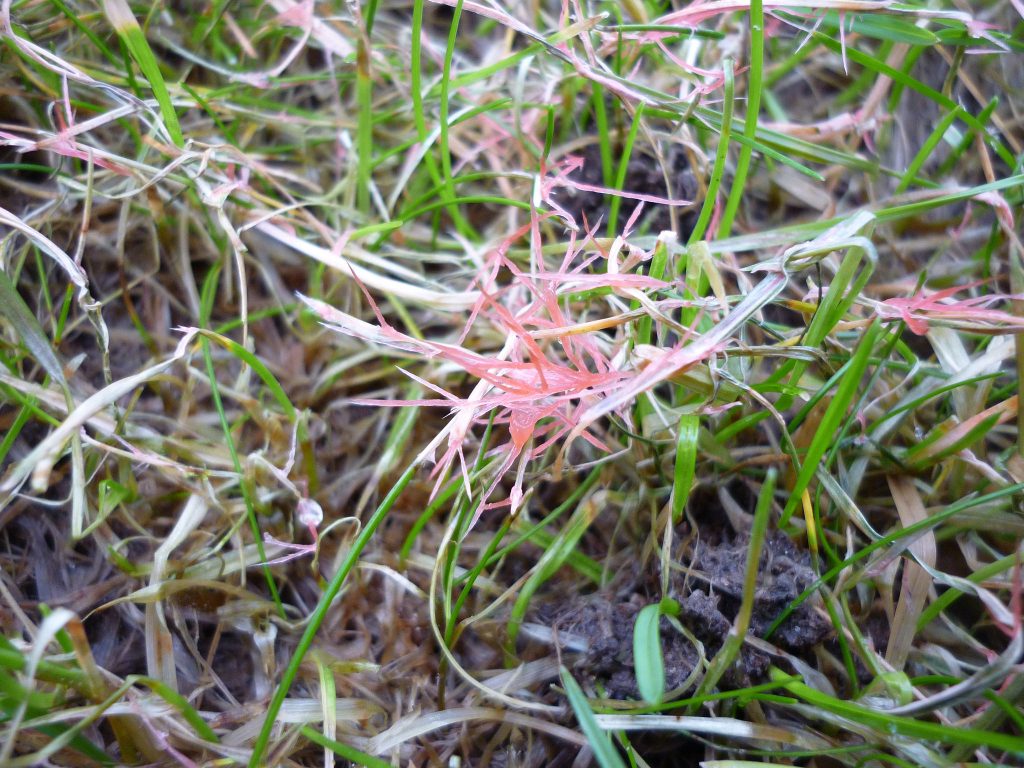
During the summer months, the yard is your pride and joy, especially when there are only a few months to spare this type of weather in Massachusetts. If you aren’t careful your yard can be overrun by a myriad of diseases. The most important step in treating a disease is to be able to identify it. Here are four common lawn diseases found in Worcester:
1. Brown Patch
One of the most common types of lawn diseases, brown patch, appears as light brown patches on your grass and can spring up virtually overnight. The fungus overwinters in plant debris where it can survive for years. It then makes its way into your grass through cuts caused by mowing. When temperatures consistently stay above 70 degrees and humidity is high, the damage caused by this quick-moving disease can be seen almost immediately.

Brownpatch is tough to get rid of, but you can manage and contain the problem.
- Don’t over-fertilize: Adding fertilizer can exacerbate the situation.
- Proper watering practices: Only water your grass in the morning if it’s necessary.
- Aerate: Allow your lawn to breathe and get water down to the roots.
- Overseed with resistant strains: Planting a variety of grasses with a resistance to the fungus can help control the spread.
2. Dollar Spot
Do you have small light brown or straw-colored spots dotting your lawn? This may be dollar spot, an infection that spreads when weather is moist, days are warm, and nights are cool. As the disease spreads the dots grow in size until they grow together, killing large swaths of lawn in the process.

Dollar spot is also manageable with proper fertilization and irrigation. Once again, we can’t overemphasize the importance of aeration on your lawn in Worcester. It’s important to remove thatch buildup which causes water to pool on the surface. It also brings in oxygen to the soil to encourage root growth. An excellent time to aerate your lawn is in the fall.
3. Snow Mold
Snow mold is why it’s so important to rake your leaves in the fall, not in the spring. If you wait too long and your leaves get buried under a thick blanket of snow, snow mold could spell trouble for your lawn in the spring.
When the snow melts you’ll notice white or grayish spots on your grass that appear web-like. This lawn disease usually goes away on its own after the site dries out, but you can help it along by cleaning up any debris in the vicinity.
4. Red Thread
Red thread can occur at any time of the year but usually in late summer and autumn when the weather is wet and cool in Worcester. The fungus creates a red jelly-like substance on blades of grass. The blades turn brittle, die, then fall to the soil where it creates thatch and a breeding ground for more fungus.

The best way to combat red thread is to nip it in the bud. Since it thrives in undernourished turf, be proactive and fertilizing your lawn. If you notice signs of red thread, use fertilizers high in nitrogen and dispose of grass clippings from the infected area.
Need additional help with your lawn or other outdoor services? Visit LawnStarter’s Worcester lawn care page for more info.